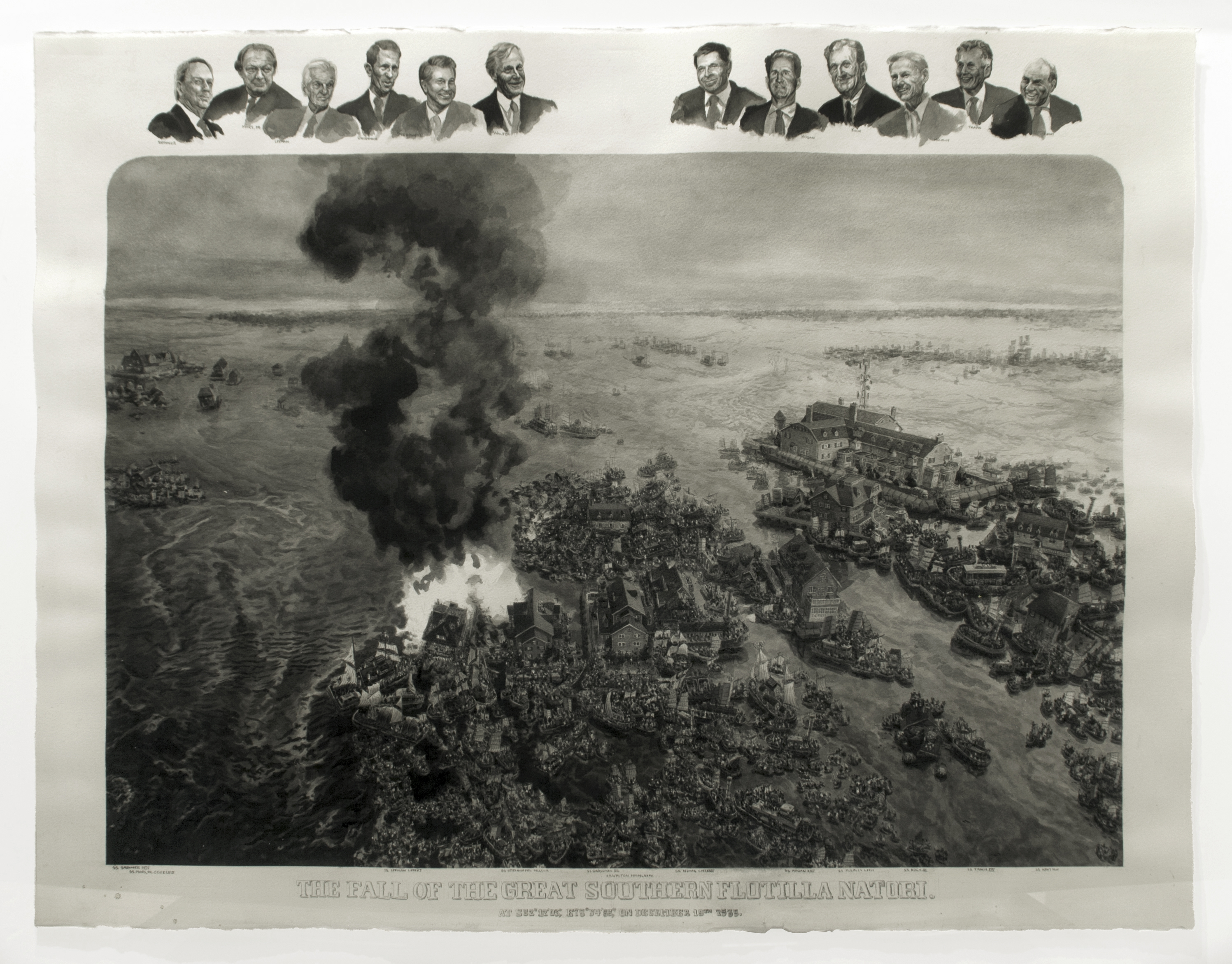The aggressively mimetic realism that crowds this exhibition, curated by one of the gallery’s artists, is exceedingly white. Nearly every work is completed on white paper and color is employed by only four of the fourteen artists included. This makes the exhibition rather elemental in its approach to drawing—figure/ground, black/white—and suggests a cluster of crook-backed scribes toiling to register every flower mentioned in the Old Testament.
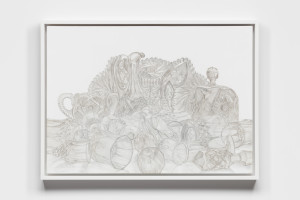
Katherine Vetne, American Brilliant (2015), courtesy of the artist and CB1 Gallery. Photograph by John Janca.
This medium definitely influences the message in that past thematic traditions are revived. We see an updated vanitas of glassware by Katherine Vetne; her silver point drawing American Brilliant (2015) is particularly strong. Peter Mitchell-Dayton creates a genre drawing worthy of 17th century Leiden but twists the notion to 1970s Los Angeles. His graphite rendering of The Rockford Files character Gretchen Corbett, File Cabinet (2012) is so tender it suggests a childhood TV crush (mine was Daphne from Scooby-Doo).
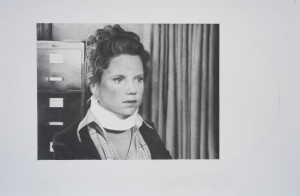
Peter Mitchell Dayton,
Gretchen Corbett (File Cabinet), 2012, courtesy of the artist and CB1 Gallery.
Going full Neo-Romantic, Jacob Kenchiloe’s nude shepherd—Untitled (2016) and Untitled (2011)—idylls with rabbits and lions. Works by some of the other artists are less successful because the form does not bolster the content, leaving only their richly rendered imagery to be admired.
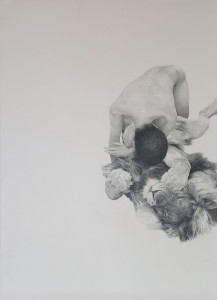
Jacob Kincheloe, Untitled (2016), courtesy of the artist and CB1 Gallery.
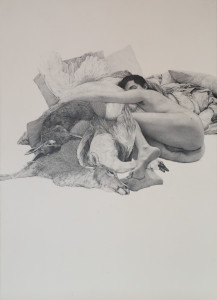
Jacob Kincheloe,
Untitled (2011), courtesy of the artist and CB1 Gallery.
Most engaging are two works by artifact forger and shaggy-dog historian Eric Petitti. His richly detailed drawings, in ink and graphite, imitate those archive-dwelling 19th century etchings of tragedies and battles that occurred before the advent of photography. The events he depicts, however, occur only in a speculative history of his own devising. Displayed recto/verso in one of the exhibition’s two galleries, this pair of works records incidents of an invented future’s past, when ocean-going city-states rose and fell, making these two 22” x 30” drawings, The Liu-Casco Theory About the Loss of the Golden Pear (2013) and The Fall of the Great Southern Flotilla Natori (2014), the standouts of the exhibition.

Eric Petitti,
The Liu-Casco Theory About the Loss of the Golden Pear (2013), courtesy of the artist and CB1 Gallery.

Eric Petitti,
The Fall of the Great Southern Flotilla Natori (detail), 2014, courtesy of the artist and CB1 Gallery.
Tight Ass: Labor Intensive Drawing and Realism, February 27 – April 9, 2016, at CB1 Gallery, 1923 S. Santa Fe Ave., Los Angeles, CA 90021, cb1gallery.com.

